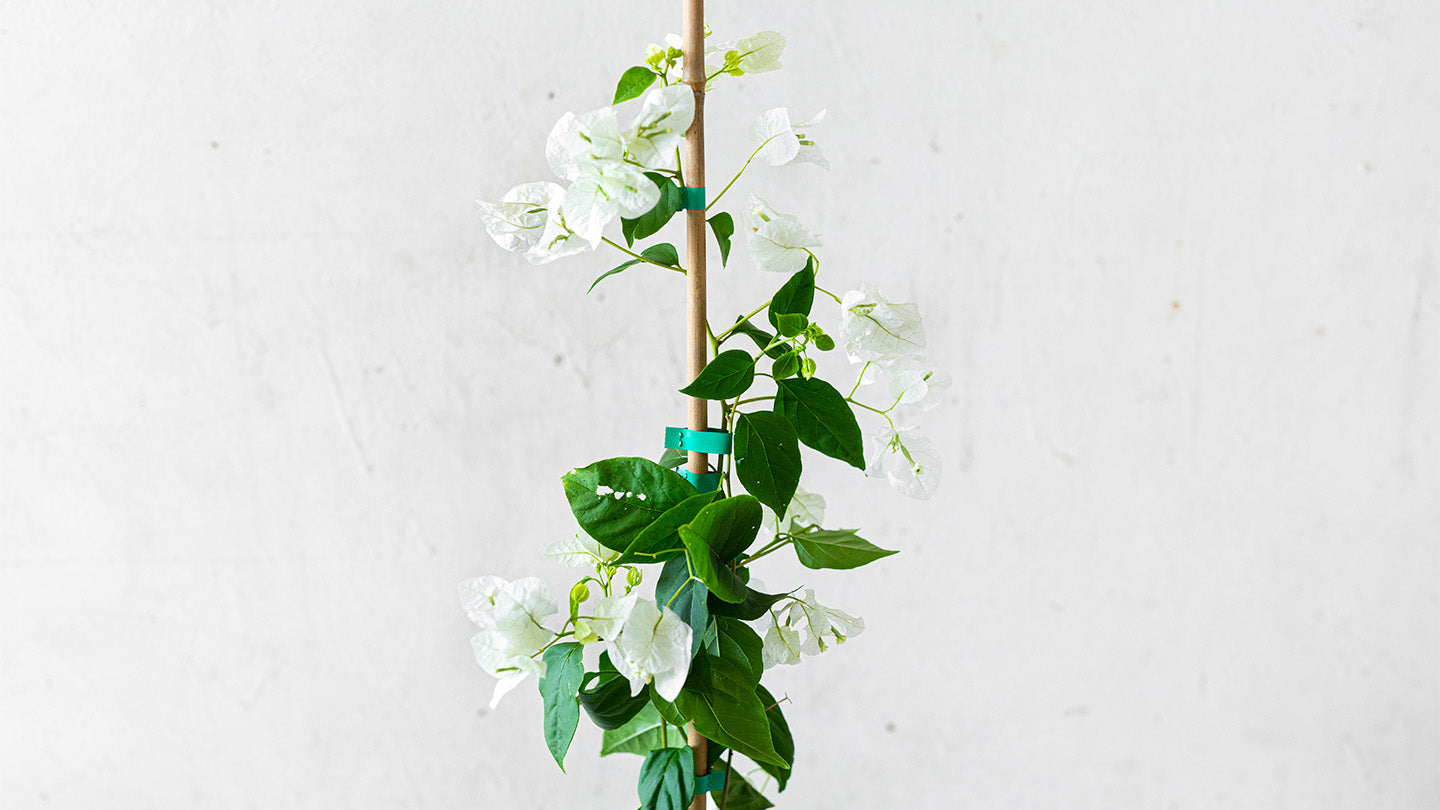cybloom
Bougainvillea White
Regular price
€13,50 EUR
Regular price
Sale price
€13,50 EUR
Unit price
per
Tax included.
Couldn't load pickup availability
Family: Nyctaginaceae
Origin: South America
The Size: 15–40 ft. tall, 15–40 ft. wide (outdoors); 2–6 ft. tall, 1–3 ft. wide (indoors)
Temperature & Humidity: Bougainvillea is a relatively hardy plant, able to withstand a range of temperatures, from tropical highs of 80 degrees Fahrenheit and above, all the way down to 40 degrees Fahrenheit, the lowest temperature it can tolerate. Due to its tropical origins, humidity is helpful, too—spritzing the plant with water isn't necessary, but if your home is particularly dry a small humidifier near your bougainvillea can help.
Lightning: Bougainvillea plants are lovers of sunlight and need full daily exposure to thrive. Another important note: The color saturation of your bougainvillea relates to how much sunlight it gets—more light equals brighter hues.
The Soil: When it comes to soil, bougainvillea plants thrive in a moist but well-drained potting mix that's slightly acidic (between a 5.5 and 6.0 pH level). Top your mixture with compost to ensure a rich, nutritious soil, and opt for a pot with at least one drainage hole in the base to lower the risk of root rot.
Watering: Keep your plant evenly moist during the spring, summer, and fall months, and nearly dry in winter (bougainvillea blooms better with drier winter conditions). Water your bougainvillea to saturation, then let the first inch or so of soil dry out before watering again. Too much water can lead to overly-green growth and eventually root rot; too little, and the plant can wilt.
Fertilizer: Bougainvillea requires a lot of nutrition to produce blooms throughout the season, especially indoors (where almost all plants are less likely to bloom as frequently). For the best chance at a successfully full plant, feed your bougainvillea every seven to 10 days using a weak liquid fertilizer. There are several fertilizer blends specifically geared toward bougainvillea on the market, but one formulated for other tropical plants, like hibiscus, can work too.
Transfer: When choosing a vessel to plant your bougainvillea in, always opt for a larger size than you think you need. Bougainvillea spreads rapidly and, in suitable environments, will quickly grow into small trees or large shrubs several feet high. To keep things manageable in containers, control the plant's growth with yearly repotting and root pruning in the spring. Once the plant is large enough, aim to repot it every two years.
Features of Care: Native to South America, bougainvillea was named in honor of Louis Antoine de Bougainville, a sailor and explorer during the late 1700s. Despite its showy nature, bougainvillea is not a particularly high-maintenance plant. The vine-y shrub typically blooms three times a year once established, often going dormant and losing its leaves, bracts, and flowers during the cooler winter months. It prospers best in tropical or semi-tropical environments, and will therefore require lots of water and sunlight whether planted indoors or outdoors.
Difficulties: Outdoors, bougainvillea can experience a few pests, most notably the bougainvillea looper caterpillar, which feeds on the leaves of the plant. However, when indoors, you may want to keep an eye out for mealybugs, a common indoor pest. Mealybugs appear most often on the stems and leaves of a plant, identifiable by the fuzzy, white mass they create as they group together. Mealybugs feed off of new growth, eventually damaging the leaves and causing them to yellow and die. To rid your bougainvillea of mealybugs, treat it with neem oil weekly until they've died off.


